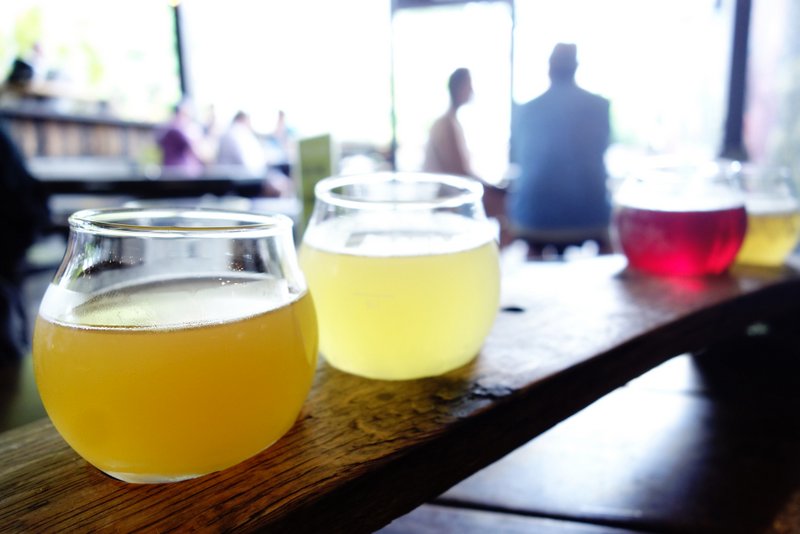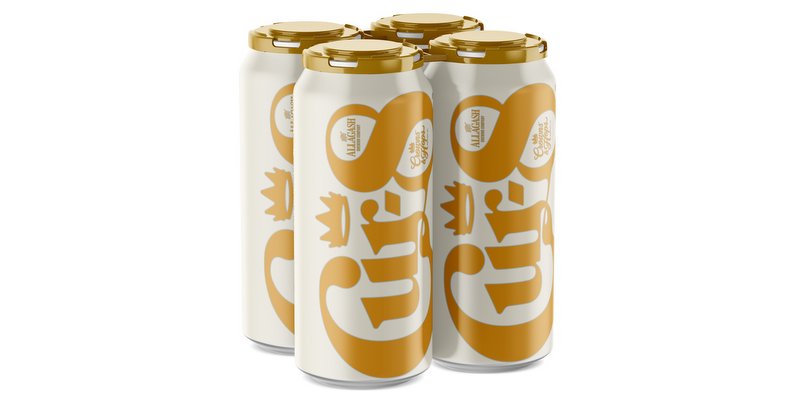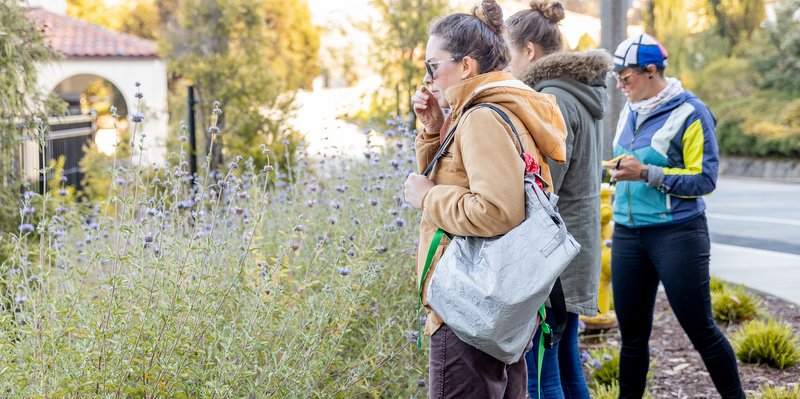
Anderson Valley Brewing Co. in Boonville, Calif., makes some awesome Goses. In fact, Brewmaster Fal Allen wrote a whole book on them. So who better to submit 6,000+ words on the topic?
In the beginning … there were Goses (we think)
We know that people were brewing beer as long as five or six thousand years ago and it is very probable that the “idea” of fermenting cereal grains arose independently in more than one area. There is well documented evidence of brewing in Mesopotamia about five thousand years ago but some recent archeological finds strongly suggest that a form of beer was being brewed in Scotland about the same time. (Nelson 2005)
We have very little knowledge of what those beers were like. In some cases we can discern some ingredients that were used, but we have no way of knowing what they tasted like. In all likelihood these beers were made from grains that were already made into a bread like product; crumbled into water and allowed to ferment. A variety of grains (and other ingredients) were used depending on what was available on hand. This would have varied both by location and by time of year.
Beer was thought vastly inferior to wine throughout the Roman empire, and it was not until the Middle Ages (476 to 1453 CE), when the beer drinking Germanic peoples expanded their empires, that we find much written about beer by people who actually drank it.
Of the limited number of references to beer that can be found, there are differences in interpretations, language, and terminology that make it all the more difficult to decipher their meaning. Books were hand written and rare and by the end of the first millennium the printing press was still a distant 400+ years in the future.
This was the state of affairs when Gose was first brewed.
“Gose” is a German word and is pronounced “GO-zah”. The beer is named after the river Gose that runs through the town of Goslar where the beer originated. Gose was first brewed somewhere around 1,000 years ago in the small town that was just springing up near the silver mines of the Rammelsberg Mountain in the Harz region of lower Saxony.
Those early Goslarian ales were probably significantly different from the Gose we are drinking today. The original Goslar beer was almost certainly spontaneously fermented by multiple kinds of Saccharomyces as well as lactic acid bacteria, Brettanomyces, other wild yeast, and probably even a bit of acetobacter if the beer was left to age. With the exception of the brewing kettle almost all the brewing equipment back then would have been made of wood. That mixed culture lived in the wood vessels that were used for brewing and fermenting the beer.
The brewing process was very different from that of today. Brewers did not sparge the mash, and if they boiled the wort at all, it was not for very long. We can be almost positive it was brewed with a spice mix and not with hops. During the medieval period, hops were not yet used in brewing, most beers were brewed with a mixture of spices (sometimes referred to as gruit).
There were two main styles of beer back then: a strong alcoholic brown beer brewed with gruit spices, and a low alcohol white beer usually made with some portion of wheat.
These two beers were very different. The brown beers were between 7% or 9% (ABV) and the alcohol and herbs helped to preserve it. Beers of that strength (that were sometimes fortified with intoxicating herbs) were too alcoholic and expensive (due to increase malt requirements) to be consumed throughout the day.
For daily consumption brewers made a much lighter white beer. These beer were between 2% to 5% (ABV). They had neither sufficient alcohol nor many spices to help preserve them, and so would sour quickly. They were often made with malt that was not kilned but left to “air dry” in the sun or the attic. The lack of kilning lead to a malt that produced a cloudy beer very light in color and that lacked the bready flavors we normally associate with beer. These beers were often served within 48 hours of brewing and as they aged over the next week or two the sourness would increase.
Most of these white beers have passed on into history. Of those few that do remain (Berliner Wiess, Belgian Wit beer, Broyhan and Grodziskie), Gose predates them all.
Gose ’round the world

Gose’s long and meandering history, over the thousand or so years took it from Goslar to Leipzig and beyond. For several hundred years Gose’s renown spread though out the region. Most of the neighboring towns started to emulate the style.
Soon there was the original Goslarian Gose, but also a Halberstadt Gose, a Blankenburger Gose, Aschersleber Gose, Wernigeroder Gose, a Leipzig Gose and many others. Gose became so popular as an export from Hammburg in the 1300s that they put a special tax on it and other foreign beers to keep it from out selling the local beers. Gose’s popularity grew mostly to the south to Leipzig, where Gose became the beer of the town. Gose taverns started popping up all over Saxony.
At one point in the 1800s there were over 80 of licensed Gose taverns in and around Leipzig. For more than 200 years Leipzig and Gose were almost synonymous. World Wars I and II were hard on Germany and especially hard on Gose.
Gose’s final decline started in late 1950 a few years after the communist party took over eastern Germany. The communist government had very little interest in promoting regional cultures, their focus was on all things relating to mother Russia. The government started to nationalize local breweries giving control over to the state run Volkseigener Betrieb (VEB). As VEB took control they were not interested in making a niche sour beer from the Saxon region of Germany, their focus was on making industrial lagers for the proletariat. By the late 1960s Gose had vanished from the beer landscape.
Gose’s story might have ended there were not for the efforts of Lothar Goldhahn and Dr. Hartmut Hennebach.
Goldhahn had been a restaurateur until the communist government came along and re-assigned him to the job of book binder (a job he had little fondness for). He dreamed of opening his own restaurant. In 1985, Goldhahn read an article in a local newspaper about Leipzig’s Gose culture during the 18th and 19th centuries.
He conceived to re-open the old Gose tavern named Ohne Bedenken, to restore it to its former glory of the late 1800s, but the job would not be an easy one. A large part of the beer garden had been damaged in bombings during the war. After the Communist party’s takeover of East Germany in 1949 the Ohne Bedenken fell on hard times. Goldhahn would not only have to get permission from the Communist government (private businesses were not the norm) and he would also have to invest over 3,000 hours of his own time to restore the tavern and restaurant.
One day in 1985 while searching for Gose memorabilia at a swap meet, Goldhahn met Dr. Hartmut Hennebach (a former biologist). Hennebach was selling off his small collection of things related to the history of Leipzig. They began talking about Leipzig and its rich history and soon they became friends. Herr Goldhahn, assisted by Dr. Hennebach, began doing extensive research about Gose and the Gose taverns and eventually felt that they had come up with a traditional Gose recipe for their new endeavor.
Goldhahn felt strongly that the new Gose should be brewed in Leipzig but no local brewery wanted anything to do with this odd, top-fermented sour beer.
In 1985, he convinced the Schultheiss Berliner-Weisse-Brauerei in East Berlin to brew a Gose for them. The Gose Ohne Bedenken re-opened in May of 1986 to great reviews and enthusiasm quickly spread. Then came the fall of the Berlin wall and for a time their Ohne Bedenken Gose tavern flourished. By the mid-1990s it was so popular that it was impossible to even get in the building without a reservation.
In 1999, Homebrewer-turned-professional, Tilo Jänichen and Adolf Goedecke (great great grandson of Ritterguts Gose brewery owner) formed a venture to again brew the Ritterguts Gose. They produced the beer according to the Rittergut Gose profile from 1824 and they were lucky enough to find a few old bottles of beer from which they could culture up yeast and lactobacillus to use in the fermentation (McGregor 2017). They started brewing at the Microbrewery Leipzig but soon moved production to the Brauerei Reichenbrand. Some other breweries started brewing their own Goses.
As recently as the early part of the second decade of this century, Gose was still an almost unheard of style.
In early 2012 Westbrook Brewing released their interpretation of a Leipzig Gose. It was the first release of a Gose that got any real traction in the USA, and for many, this was their introduction to the style. As brewers and consumers became more familiar with the style a fascination with sour beers began to grow. This fascination would soon turn into a full blown movement.
Gose would rise from the brink of extinction to common place offering. Gose’s popularity has been driven by many factors; drinkability, being a great palate for other flavors, by consumers desires for “anything new,” and by ease of production.





Leave a Reply
You must be logged in to post a comment.